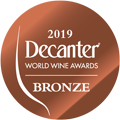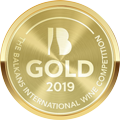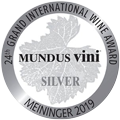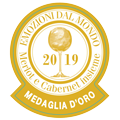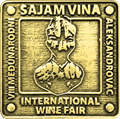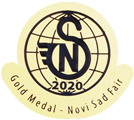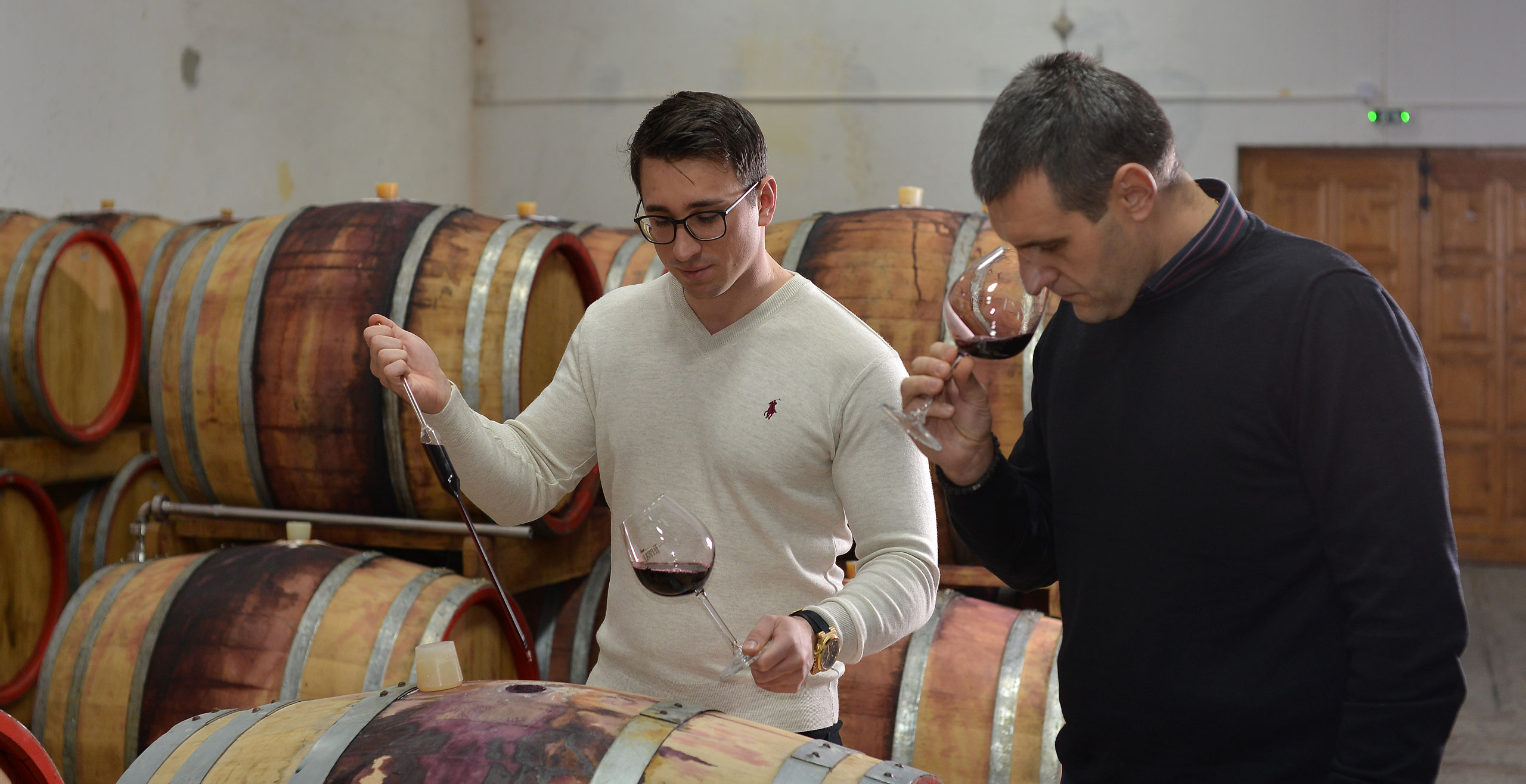
Vinograd je veoma kompleksan ekosistem
Kao proizvođači znamo da se, nikada ne može pretvoriti loše grožđe u kvalitetno vino. U suštini, u podrumu nije moguće poboljšati kvalitet grožđa, već samo sačuvati postojeći kvalitet. Prema tome, naša vinova loza se već u vinogradu tretira sa najvećim poštovanjem i pažnjom.
Jedan od naših najvažnijih ciljeva u vinogradarstvu jeste da sačuvamo prirodne plodnosti zemljišta. Grožđe može u potpunosti razvijati potencijal samo ako se uzima u obzir ceo sistem, a to znači:
zemljište, loza, klima, flora i fauna, kao i vremenski uslovi.
Da bi se proizvelo čisto i dobro vino, neophodno je više pažljivih koraka i postupaka. Uz mnogo senzibilnosti i strpljenja, mi gledamo da pažljivo pratimo ciklus vegetacije, uvek spremni reagovati na promene spoljnih okolnosti. Savremena tehnologija uz kombinacijom tradicije, omogućavaju nam da na kraju kreiramo jedinstveni stil “Nikad nije kasno” vina.
Temelj za proizvodnju kvalitetnih vina jeste zdrav i očuvan vinograd.
Samo zdravo grožđe može proizvesti velika vina u podrumu.
Da bi se proizvelo takvo jedinstveno vino u kome svako može uživati, neophodno je napraviti sledeće korake:
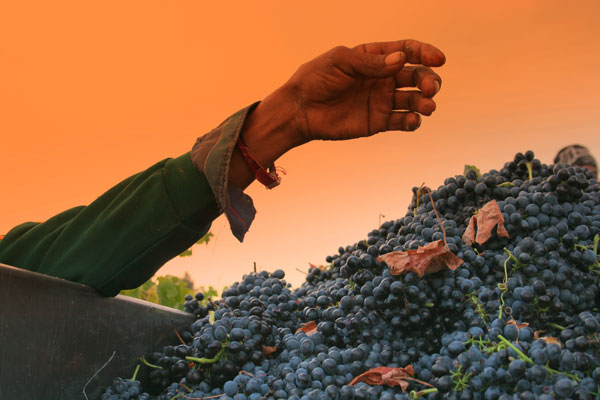
1.HARVEST
The beggining of harvest is different every year.
Each producer or each winery has its own rules according to which they determine the best time of year to harvest.
The moment when the grapes are harvested depends on the climatic zone, as well as on the weather conditions.
Our philosophy is very simple,
“Grapes must be ripe``, meaning that they have enough sugar. In the end, we all want the alcohol in the glass that is a result of the fermentation of the contained sugar. At the same time, the relation between sugar and acid in grapes should be taken into account.
The goal is to make the relation of sugar and acid harmonious.
It is important, for the entire process, that grapes are healthy, which allows us to use berries‘ skin untouched and undamaged.
That is why we implement a pre-selection process before the harvest, where the material that does not meet our quality requirements is separated and returned to the ground.
Thus, unpleasant microorganisms cannot multiply and cause unpleasant odors and tastes in our wine.
2016
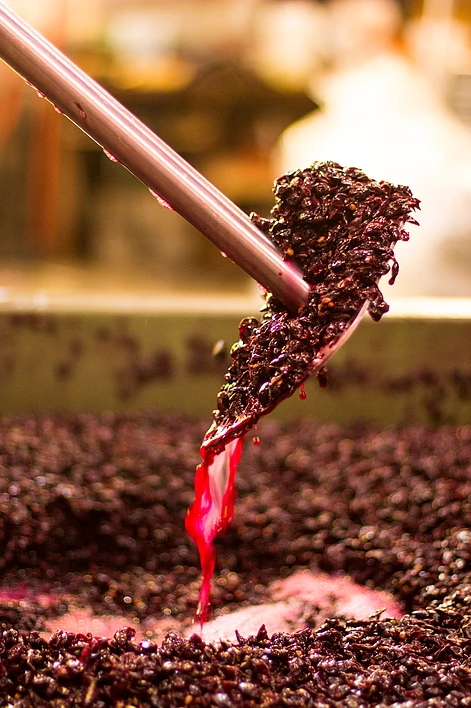
2. CRUSHING WINE GRAPES
After the harvest, we put our healthy grapes into a grape crusher.
Crushing wine grapes, in fact, describes a short process, where berries are being separated from stalks after the harvest. This step is very important because stalks can retain some acids that spice up the red wine with bitterness. After the process, as a result we get heap of crushed grapes which is later fermented.
3. FERMENTATION
In alcoholic fermentation, sugar usualy becomes alcohol. This is possible with the help of yeast.
Yeasts are natural fungi that multiply or duplicate. During fermentation, yeast converts sugar from grapes into alcohol. On average, fermentation lasts between 7 and 14 days, depending on temperature conditions. The warmer it is in the basement or tank, the faster it progresses. In making our wine, in fermentation process we use grape juice, but also grape skin.
The reason for this is the need to extract anthocyanins from the skin of black grapes, which later give the wine its typical red or purple color. Also, in that way, more tannins and minerals are separated, which later give the wine a fine and clear structure.
Crushed black grapes are strained only after the red color has taken over and when the fermentation process is finished.
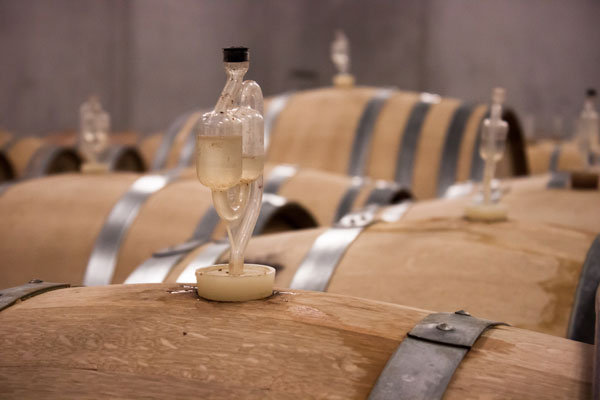
4. MATURATION
For maturation of our wine we use wooden barrels - barrique barrels . Even the Old Celts used wooden barrels for storage of wine and other liquids.
Over the centuries, this storage technique has advanced greatly, and over time it
proved to be the best method for maturing red wines in the wine industry.
In this way, we are able to give our wine its final form.
This leap in quality is a result of a few important factors:
– choice of the wood, degree of „toasting“ and storage time.
Barrique barrels are burned with fire of varying degrees on the inside - the so-called toasting. The “toasting” effect and oak wood enrich the wine with various ingredients and allow oxygen to penetrate through the oak, wgich provide the wine with moderate and positive oxidation.
Also, tannins that have a good effect on the structure of the wine are released from the wood and added to the composition of the wine. This is what makes high quality and complex wine.
It’s important to note that it is not possible for every red wine to mature in barrique. In general, the wine needs a sufficient structure, so the aromas of the oak tree harmonize with the variety. Therefore, wines of poor quality cannot be improved just by storing in a barrique.
``Nikad nije kasno`` wine that matures in barrique develops different characteristics. In addition to fruity aromas that the wine has thanks to the choice of varieties, the aromas of cinnamon, vanilla, dried cloves, caramel and roasted almonds can be noticed often. Through such maturation in the barrique, characteristics of varieties of our wine are being combined with the characteristics of oak wood, which creates the perfect product.
Our wine was maturing for 18 months in barrique barrels made of Serbian Oak.
2017
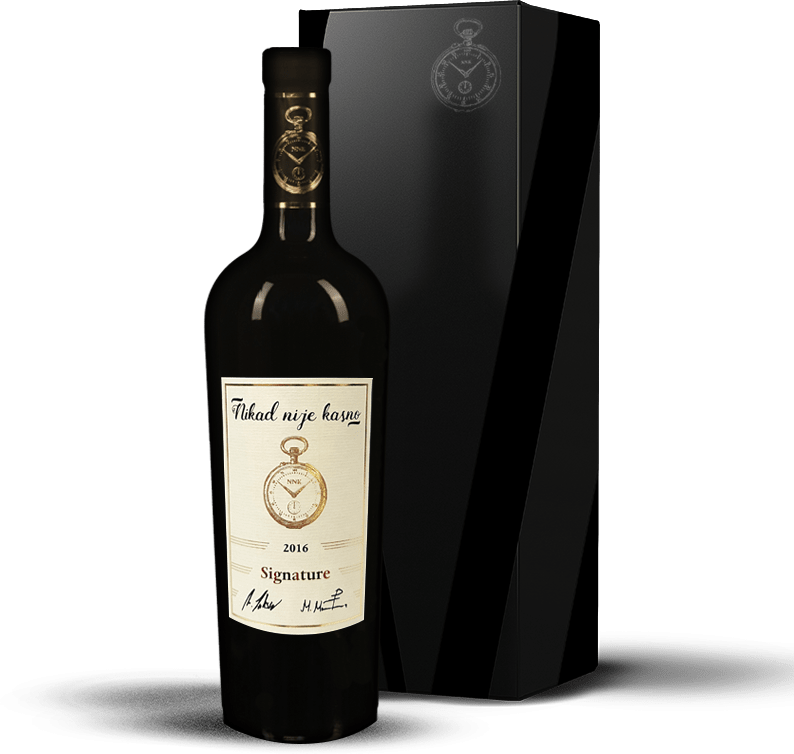
Signature 2016.

